Justice or overreach?: As crucial test looms, Big Greens are under fire
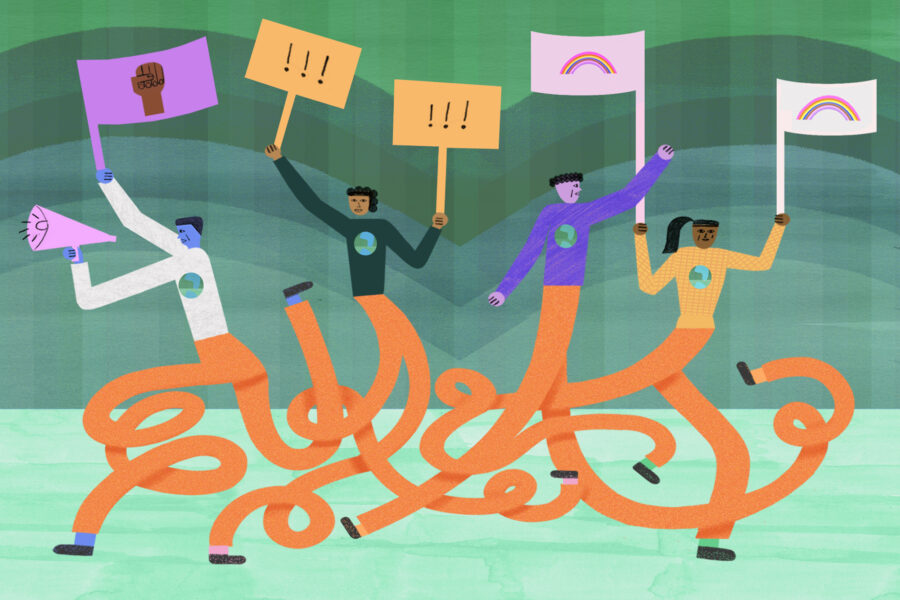
When Aaron Mair ascended to the board presidency of the Sierra Club, he brought a new mission to the century-old environmental group: Where once it devoted itself solely to conservation issues, now it would embrace a much broader range of social justice causes.
Mair came from the environmental justice movement, where communities of color battle against industrial pollution rarely seen in wealthier, whiter areas. The movement has DNA more akin to the civil rights movement than John Muir’s reason for founding the Sierra Club: conserving streams and forests.
One of Mair’s first actions in 2015 was joining with the American Civil Liberties Union, the National Center for Transgender Equality and the NAACP in demonstrations backing the Voting Rights Act.
Mair’s arrival accelerated then-executive director Michael Brune’s own progressive moves. Brune had taken over just a few years before from the Rainforest Action Network, a more activist, protest-oriented group. He took the Sierra Club in an overtly political direction, aligning it with the Democratic Party to create a “green line” of defense, as environmental groups called it, against Republican policies in Congress.
Under Mair and Brune, records show, the Sierra Club funneled its own funds into the groups Black Lives Matter and Showing Up for Racial Justice. In 2017, Brune threw the club’s support behind citizenship for children brought to the country illegally. In June 2021, Sierra Club backed reparations for Black Americans. It changed its definition of environment to the “environmental health of all communities, especially those communities that continue to endure deep trauma resulting from a legacy of colonialism, genocide, land theft, enslavement, racial terror, racial capitalism, structural discrimination, and exclusion.”
While many people within the Sierra Club saw this transformation as a predominantly white organization’s belated embrace of diversity and inclusion, others saw it as an abandonment of core principles. Either way, a group that was once a non-partisan advocate for clean air and clean water had become a full-fledged combatant in the nation’s culture wars.
“I don’t really know where it stands,” Guy Saperstein, a longtime Sierra Club member and donor, said in an interview. “Is reparations now part of the mission of the Sierra Club? I don’t know. I don’t know what the connection is and whether it should be.”
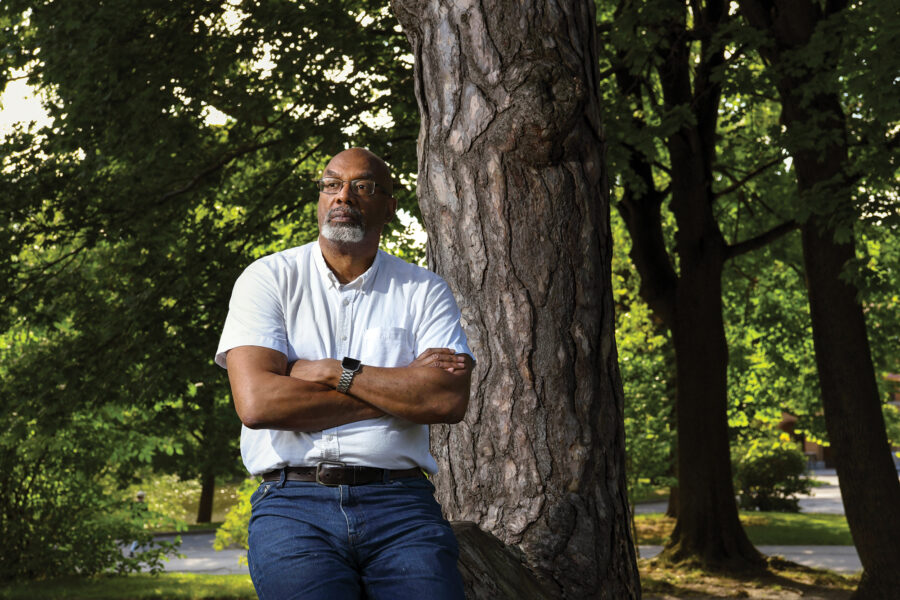
Now, the nation’s environmental movement is at a crucial juncture. President Joe Biden’s ambitious agenda – a rare opportunity to make meaningful strides in the fight against climate change – is before Congress. The White House is scrambling to enact key measures before a midterm election that could shift control of the House and Senate. But the Sierra Club and its Big Green brethren – Audubon, Greenpeace and others – are struggling to stitch together the necessary votes. They are now widely believed to be a tool of the Democrats alone, leaving little hope for Republican support in the Senate or leverage between the two parties. A looming Supreme Court decision that could gut executive branch actions to rein in climate change raises the stakes for congressional action before the midterms even higher.
“We are losing,” a longtime environmental group official said, granted anonymity to protect relationships with clients. “Democrats will continue to take the environmental movement and environmental justice movement for granted because they’ve got no place else to go.”
But if the current legislation fails and, as expected, Republicans win back one or both chambers of Congress, that would leave the environmental movement completely stranded.
“I don’t know that we are as a movement well-positioned to handle that — in fact, I think I feel safe saying we are not,” said Collin Rees, U.S. program manager at the environmental group Oil Change International. “That’s going to be a bit of a moment of reckoning. And that will both test some of the transformation that’s happened so far and require new ideas and new ways of working.”
At the Sierra Club, like other Big Greens, these tensions have taken a serious toll on morale, leaving many old-line supporters like Saperstein feeling alienated while a newer, more diverse workforce complains of a faltering commitment to equity and inclusion.
Both Mair and Brune were, in their own ways, victims of the tensions.
In the wake of George Floyd’s murder in 2020, Brune wrote a blog post entitled “Pulling down our monuments” that characterized Muir as racist.
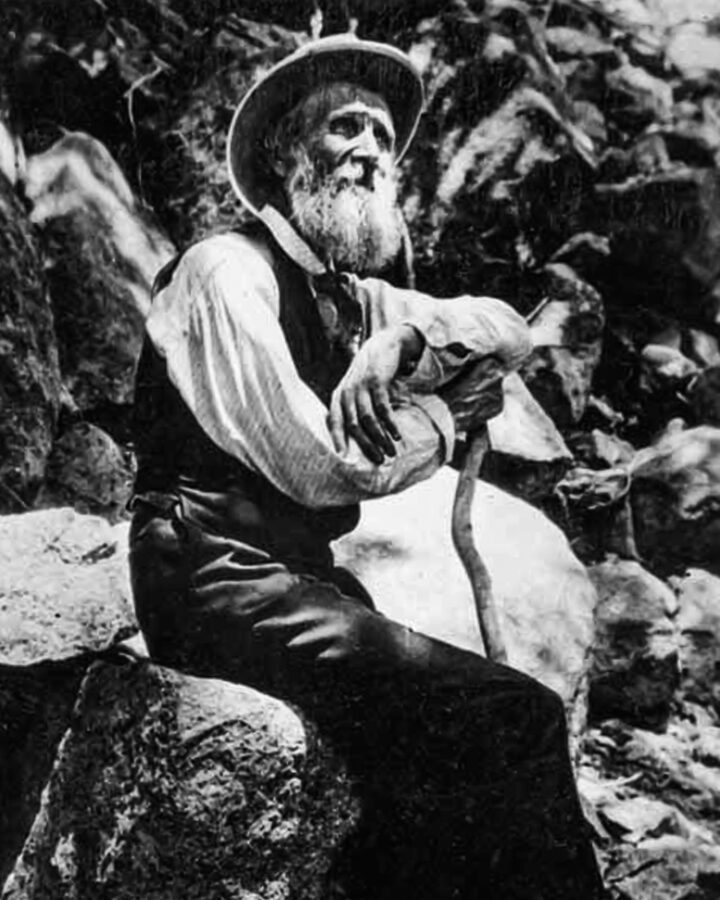
But Mair, who had left the presidency in 2017 but was still on the board, accused Brune of failing to consult him before posting the blog. He co-wrote an essay defending Muir’s reputation in August 2021, just two days before Brune resigned under fire. The board later considered censuring Mair and his co-author. Mair remains on the board.
That dispute over John Muir’s legacy – with Mair, a Black man, as a defender – brought behind-the-scenes feuds between board members, staff and leadership into public view.
The Sierra Club is hardly the only group facing such tensions, which have spread throughout the environmental movement’s heavyweights just when a unity of purpose seems most needed.
Brune declined to comment. Sierra Club spokesperson Jonathon Berman said that, “Holding ourselves accountable and ensuring a safe and inclusive organization at all levels is paramount to protecting the natural and human environment.” Mair said he has no regrets, insisting that all the changes – the embrace of a broader range of equity and social-justice causes, the internal tensions that followed – are part of an essential evolution for groups that had lost touch with legions of potential supporters on the left, particularly among people of color.
“What I want to make sure people don’t lose sight of is that yes, this is messy stuff,” Mair said. “This is essential stuff. This needs to happen. But the means, the manner by which that happens, is also critical and important.”
Like Mair, many climate activists insist that the environmental movement’s pivot to embrace a wider range of causes is necessary to score political wins, even as it invites charges of overreach. But by taking on new missions and recruiting staff to match, the movement has opened its doors to people who want organizational change faster than some leaders seem capable. That has led to painful reckonings in many organizations, with diverse younger staff members accusing leaders of neglecting their concerns.
“If you’re optimistic, it’s creative destruction,” said Justin Guay, director of global climate strategy with environmental group the Sunrise Project. “It’s just going to be messy for a while.”
But, he added, “I think the challenge we face from a climate perspective is we’re running out of time.”
Greenpeace USA is the latest major environmental organization riven with dissension. Interviews with 10 current and former staffers and documents obtained by POLITICO reveal an organization divided by tension between senior management and its younger workers over race and gender issues, culminating in a 2019 audit that blamed top-level management for creating a “culture of suffering and overworking” that was “guided by fear.”
Greenpeace USA chief people and culture officer Jerilyn Johnson said it hired the outside firm at request of staff following several high-level departures from its U.S. leadership team. It sought to address equity and retention, along with fostering a more supportive culture.
Some Greenpeace veterans say the need to keep its internal house in order has sapped energy for the battle for legislation to fight climate change.
“I have a lot of people ask me, ‘What happened to Greenpeace? Where’s Greenpeace? Where’s the campaigns? Where’s the expertise?,’” said Ivy Schlegel, who left a senior position after nearly 12 years with the organization last year. “I feel like we’re just watching Greenpeace crumble away.”
Yet most environmental activists who spoke with POLITICO saw these types of convulsions as necessary for creating a more effective pressure movement.
“They understand that you cannot win on major pieces of environmental or climate legislation without Black and brown and indigenous and other folks who come from vulnerable communities,” said Mustafa Santiago Ali, vice president of environmental justice, climate and community revitalization with the National Wildlife Federation.
Pulling together coalitions of groups with disparate interests can indeed increase political potency, said Jamie Henn, a longtime environmental organizer. He helped orchestrate some of the movement’s most successful mass demonstrations as a co-founder of the group 350.org, reaching out to a labor organization, Service Employees International Union and the NAACP, for a 2014 climate protest that drew 400,000 people to New York City.

But Henn said it’s important to distinguish the grunt work of organizing from “performative solidarity.” He observed too many organizations distracted by “having internal debates about messaging and identity and your positions on different issues.”
Indeed, in this new phase of environmentalism, Big Green organizations are extending themselves into labor rights, immigration, housing and democracy reform. Some groups are aiming to stir millions of latent Democratic voters across the country; to defeat state-level voter suppression initiatives; to make the District of Columbia and Puerto Rico states; to end the Senate filibuster and erode structural imbalances favoring red-leaning states.
“Do you end up taking on so much that you become paralyzed?” Henn added. “Can you actually do the longer, deeper work to build a base that will turn out for climate? That is a challenge.”
Not all donors are on board for the changes.
One former staffer at Earthjustice, which does environmental law work, who was granted anonymity to discuss confidential interactions, said some funders have told the group to stick to what it knows. That person recalled battles with a member of the board of directors when Earthjustice tried to navigate statements on police brutality, where the group sided with “defund the police” activists who wanted to divert police budgets to mental health funding and community resources. Staff drove the shifts from the inside, the person said.
“For the most part, people funding Earthjustice signed up to protect the polar bears, not defund the police,” the person added.
Earthjustice President Abigail Dillen said in a statement that “Systemic racism and social injustice are at the root of the environmental problems we are trying to address,” and that when “we speak out on injustice, and we are explicit with our donors and supporters about why that is mission critical.”
Scott Slesinger, who retired from the Natural Resources Defense Council as its legislative director in 2019, also said some donors pushed back there, as well.
“There’s a little hesitation by groups like NRDC to try to expand” the range of its advocacy, Slesinger said. “It took some education of the contributors that to reach our environmental goals the politics of the moment require us to expand. It was controversial when I left.”
The more familiar path for many donors involves reaching for the political center, and hoping to win over some moderate Republicans. For decades, the Big Green organizations were proudly non-partisan and openly cultivated centrist Republicans. It was a Republican president – Richard Nixon – who signed the bill creating the Environmental Protection Agency.
Under Nixon, in 1970, the first Earth Day drew millions of activists of both parties to the streets, noted Bill McKibben, the environmentalist and author and co-founder of 350.org, which helped organize protests against the Keystone XL pipeline.
But in McKibben’s telling, fossil-fuel companies responded to the environmental reforms of the 1970s by bankrolling Republicans to oppose further environmental action by Congress: The Republican Party left the environmental movement, not the other way around.
“The energy from that [first Earth Day] over the next decade or two coalesced into a bunch of good organizations with big buildings in Washington that were effective lobbyists as long as there was some energy left in that battery that was charged up back in 1970,” McKibben said in an interview. “But batteries run down and the other side got much better at playing this game.”
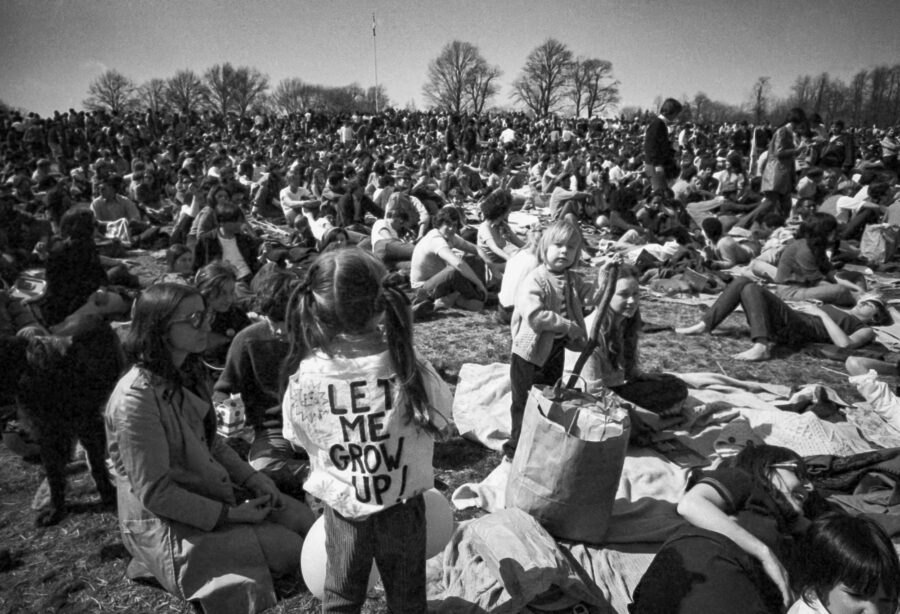
The environmental movement realized the limits of their bipartisan strategy when cap-and-trade legislation failed in 2010. The bill, which had originated as a market-based Republican solution to demands for reductions in greenhouse-gas emissions, was opposed by what would become the Tea Party movement, whose hard-right views came to dominate the Republican Party. Many environmentalists point to Harvard political scientist Theda Skocpol’s 2013 post-mortem on the failure of cap and trade as a seminal text of the modern environmental movement, and she faulted green groups for neglecting grassroots organizing.
“There wasn’t enough energy, there wasn’t enough. It was clear,” said Tiernan Sittenfeld, senior vice president of government affairs with the League of Conservation Voters. “The fight was playing out too much inside the Beltway. And I think there was a recognition that we needed to be ready next time. It was both the right thing to do and the necessary thing to do to be more inclusive.”
For years, the LCV’s annual environmental scorecard was the barometer for lawmakers’ green credentials. When cap-and-trade landed in Congress, that scorecard included just one vote on a bill outside of environmental issues – a piece of family-planning legislation. In 2010, it expanded slightly further to include a vote on building a border fence, citing environmental concerns. (It scored similar votes in 2011 and 2013.)
Then the changes came in droves. By 2014, LCV counted voting rights bills. By 2017, it included environmental justice bills in the wake of the Flint, Mich., drinking water crisis. In 2018, immigration. Then Trump-appointed judges.
And in 2020, Floyd’s death opened conversations over racial justice, police brutality and systemic racism. Many saw connections to the environment: People of color and low-income individuals are more likely to live near industrial pollution and suffer from climate change’s effects on health and property.
That year, LCV put the movement’s modern strategy into practice. It scored bills on labor organizing, policing, D.C. statehood, Confederate monuments and even ensuring that the U.S. Postal Service could deliver mail-in ballots for the Biden-Trump presidential election.
The Sierra Club began following a similar path when it expanded its mission early in the 2010s under Brune’s leadership. Then it benefited from a Trump-era windfall in fundraising, as donors saw liberal activist groups as a bulwark against the new president’s ambitions. By 2019, federal tax filings with the IRS show, the Sierra club’s annual fundraising haul had grown to $117.2 million, compared with $72.9 million in 2009.
But then the Trump wave crested. Last year, a shortfall in fundraising forced layoffs, according to interviews with staff.
Yet departures have continued, as have fights over culture flashpoints. In April, Sierra Club suspended the Colorado chapter’s leadership over allegations of a lack of racial inclusion. Mair partially blamed the Sierra Club’s new process for investigating workplace disputes, which he said uses a “victim-centered approach” that deprives the accused of due process.
This past winter, a staff revolt prompted the cancellation of a Sierra Club trip to Israel, out of sensitivity to staffers who objected to Israeli treatment of Palestinians. Even board candidates had to answer where they stood on the Israeli-Palestinian conflict.
Sierra Club’s fundraising plunged amid the turmoil, said Michael Dorsey, who was elected to its board of directors in April on a slate with Mair.
“The decisions that were being made at the time of [Brune’s] management had implications on future money, empirically so,” Dorsey said. “Many people said they are not going to donate, they are not going to [make a] bequest because of his management.”
Berman blamed the decline in fundraising on economic fallout from the coronavirus pandemic.
“Today, because of the strong partnerships we have with many of our donors and supporters, the Sierra Club is once again growing our team,” he said in an emailed statement.
He also depicted the canceled trip to Israel as a “postponement” to ensure the trip “deepens an understanding and appreciation for the region’s diverse natural and human richness.”
At Greenpeace, a deeper plunge into liberal politics has left many longtime supporters fretting that longstanding practices and principles are being jettisoned, according to current and former staff.
One turning point came in 2020, the organization threw its political support behind Sen. Ed Markey (D-Mass.) in his primary battle against then-Rep. Joe Kennedy. It was an about-face for an organization that prides itself on a simple motto: No permanent enemies and no permanent friends.
The announcement came out of nowhere for many staffers. Greenpeace had never engaged in electoral politics, fiercely guarding its independence. Several staffers pushed back against the move.
Greenpeace USA’s Johnson depicted the organization’s push for Markey as falling short of an endorsement, merely “helping folks identify the climate leaders to vote for.”
Nonetheless, she acknowledged that the move “was fodder for some internal dissent,” leading to conversations with some concerned staff members and an internal memo explaining how Greenpeace would maintain political independence.
In recent years, workers at Big Greens and other environmental groups have adopted labor unions, which provide platforms for equity complaints that often fall along race and gender lines. Tensions between recently hired workers and longer-tenured leaders soon burst out into the open.
At 350.org, the union claims that financial mismanagement led to mass layoffs and disproportionate workloads for Black and other workers of color, as POLITICO reported in February. Staffers described a hollowed out, rudderless organization far removed from its halcyon days as the movement’s logistical masterminds.
350.org’s struggles have continued since February. Its U.S. program staff stands at five people – two of which are managers – down from 9 in February and 50 in 2019. Some staff contend 350.org has relied on non-union contractors and volunteers amid a contentious union contract bargaining period.
“We expect this rebuilding to be slow and intentional and to align with the parallel process of producing a refreshed global, long-term organizational strategy,” 350.org spokesperson Sarah Wilbore said.
Wilbore added that 350.org does “hire consultants and independent contractors from time to time,” though it claims those “contracts stipulate an agreement between the individual for specific deliverables and/or purpose.” She said “350.org itself does not have unpaid or volunteer positions,” while noting its “vast, global network of local groups … are usually made up of volunteers.”
In May, the Progressive Workers Union, which represents organized 350.org staffers, filed an unfair labor practices claim against 350.org for firing a bargaining committee member and other allegations, which has not been previously reported.
Wilbore said 350.org was aware of the filing but declined to discuss it.
Staff at the National Audubon Society also began a unionization effort in March 2021 in response to racial equity and discrimination problems and led to the ouster of its then-CEO David Yarnold that April.
Discord grew to such a level within Audubon that staff pushed leadership to curtail work with Republicans, undercutting its long-held strategy of political non-partisanship, according to three current and former staffers. One of the staffers said the group consciously reduced its visibility with Republicans after listening sessions with staff following controversial comments by Sen. Mike Braun (R-Ind.), with whom Audubon worked on climate legislation, about interracial marriage and the legitimacy of the 2020 election.
Audubon spokesperson Lisa Hardaway declined to comment on the Braun situation but said the group continues to work across the aisle with lawmakers of all parties.
“While we may not agree with everything every elected official from any political party says, in order to achieve our mission, we work with elected officials across the political spectrum,” Hardaway said.
Hardaway also confirmed that the group is investigating the legacy of its namesake, the famed ornithologist and artist John James Audubon, over his attitudes toward Native Americans and his slave holdings.
Audubon, she said, was “an enslaver and held a racist worldview that was oppressive to Black people, Indigenous people, and people of color.”
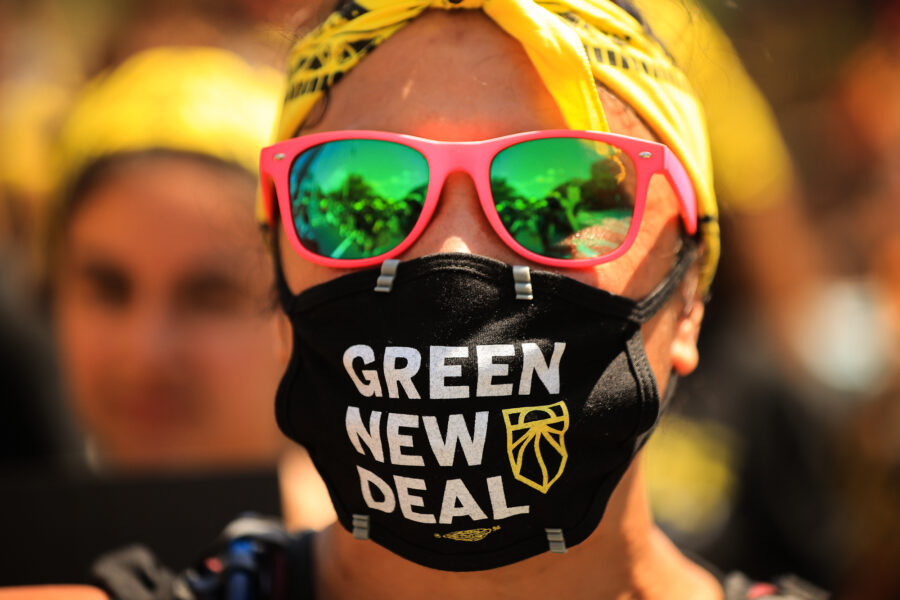
Much of the reassessment of the Big Greens’ past, present and future has stemmed from the actions of the Sunrise Movement, the youth-led environmental group that rose to fame in 2018 with the Green New Deal. The “deal” promised by Sunrise combined conservation and social justice by remaking the economy with good-paying union jobs, overhauling the energy system with renewable power, improving housing access and advocating for communities facing income, health and environmental inequality.
Yet despite its outsized impact on the movement, Sunrise, too, has taken its lumps as it matures. The organization is in the middle of finalizing its next five-year strategy, which includes a restructuring. It also will orient its systems to better account for racial and pay equity – a move that comes after Black staffers said leadership “tokenized” and “used” workers of color, according to BuzzFeed News.
Dorsey, the Sierra Club board member who is also a Sunrise board member and co-founder, said “we have had some structural and managerial stumbles.” He said Sunrise has long planned to restructure, and is weighing four different plans and organizational charts.
Sunrise spokesperson Ellen Sciales said in an email that the shift is a byproduct of an upstart, grassroots group that “succeeded beyond our wildest dreams” but now must professionalize its operations. She said leaders will outline “a vision for Sunrise 2.0 … in the weeks and months to come.” The vision will include a focus on “organizational stability” where leaders “have been working to restructure leadership, pay and benefits, and prioritize hiring more experienced staff alongside long-term financial and operational solvency.”
But unlike Sunrise, most of the movement’s big names carry years of weight that restrict their nimbleness. Many senior leaders remain predominantly white and older. Attempts to understand a younger, more progressive and racially diverse workforce often fall short. That’s served to complicate and sometimes confuse organizations’ roles in the environmental movement – a concern that reaches up to the Biden White House.
“You have to really understand where your gifts or your offerings are – I don’t want to say stay in your lane, but if an organization tries to work on 20 different things, are you taking away resources from a smaller organization?” Jalonne White-Newsome said in an interview before becoming the White House Council on Environmental Quality senior director for environmental justice in May.
By some measurements, the environmental movement has never been in a stronger position. Democrats in Congress are a vote, maybe two, from passing a bill supporters contend will drastically reduce the planet-heating gases cooking the planet. Solving climate change polls as a top-tier issue for progressive voters. Fundraising soared last decade.
Yet few in any position in the movement can predict where it’s going.
While many older activists express discomfort about embracing a broader social-justice mission, newer leaders fear the opposite – that the movement won’t meet the challenges of a new era.
“Some groups immediately were like, ‘Yes, this is where we’ve been trying to head. Let’s lean in, let’s go,’ and they jumped into the flow,” said Keya Chatterjee, executive director of the U.S. Climate Action Network. “And some groups are hanging onto the trees and they’re like, ‘Nooo, I still want to run my strategy of talking to three senators’ and thinking that’s going to pass legislation.”
Even now, as Congress stands on the goal line with massive climate spending tucked into a sweeping bill, there are “deep concerns” about how large green organizations are handling the moment, said Dallas Goldtooth, national campaigner with the Indigenous Environmental Network.
Goldtooth came up through 350.org, helping organize indigenous tribes along the planned Keystone XL pipeline route. He knows how to lead grass-roots campaigns. In some ways, he feels like he’s watching the cap-and-trade debacle happening all over again in real time, fearing that the Big Greens are on the verge of settling for a significantly smaller legislative package than progressives initially envisioned.
To the institutional, D.C.-centric environmental groups, it’s simple political reality and math – they don’t have the votes to go further. But to people like Goldtooth, they don’t have the will. They’re simply “providing cover for the administration,” he said. They don’t really feel the energy they’re trying to capture.
Said Goldtooth: “The way I would say it in direct terms is: Are they really down or is it all for show?”
Go To Source
Author: POLITICO

